ZION NATIONAL PARK FAST FACTS
LOCATION: Springdale , Utah
HOURS: Visitor Center – 8a-5p Monday-Friday November-February, Daily from March-October
COST: Weekly Pass: $35/private vehicle, $30/motorcycle, $20 on foot
TIME TO COMPLETE: 2-3 days
ACCOMODATIONS: Large parking lots, public restrooms, restaurants, visitor centers and museum
Some things need to be experienced in person to be fully appreciated. Zion National Park, as well as this entire section of Utah, certainly fits the bill. Having lived most of our lives on the opposite coasts of the United States, the middle part of the country looks like another world with its wide open spaces, drier climate, (relative) lack of trees and mountains everywhere.
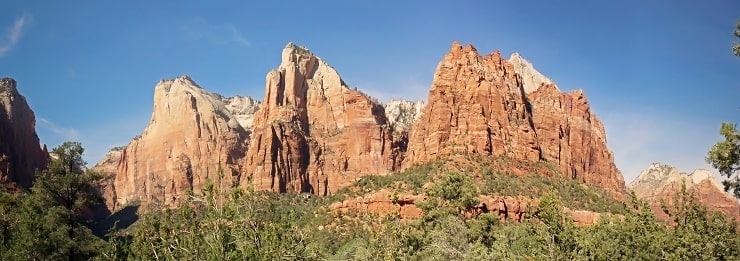
Zion is unique in that it has a bit of everything from canyons, mountains, waterfalls, trees and even caves. The park is also very popular the world over so you want to plan your vacation well in advance. Hotel reservations should be at least 6 months in advance and, if you’re planning to camp, be sure to read up on the rules and regulations. It can get very hot in the summer and many of the trails provide no shade so bring plenty of water and something cool to cover your head. So whether you’re into hiking, climbing, canyoneering, cycling or even horseback riding, Zion has an opportunity for you.
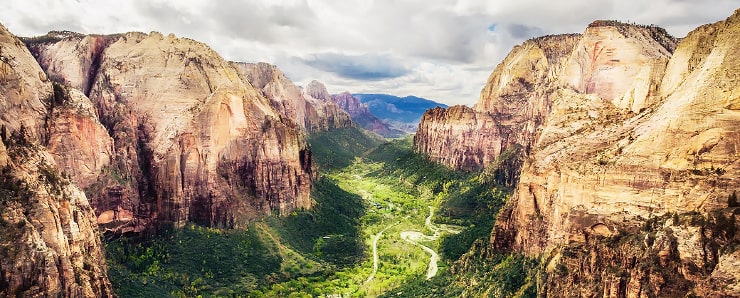
A few notes . . . please be careful. This is genuine nature and can be dangerous in areas. Bring a map and stay on the paths unless you are with a guide. Bring plenty of water and snacks (on the oft chance you get lost). Don’t take anything on you aren’t physically capable of or feel uneasy about because your safety is your responsibility. Don’t bother with your cell phone as you won’t get any reception in the park. Lastly, where applicable and within each Fun Fact (in bold) drop-down, I’ve included the best shuttle stop to use for that section of the park.
Jump to a specific section.
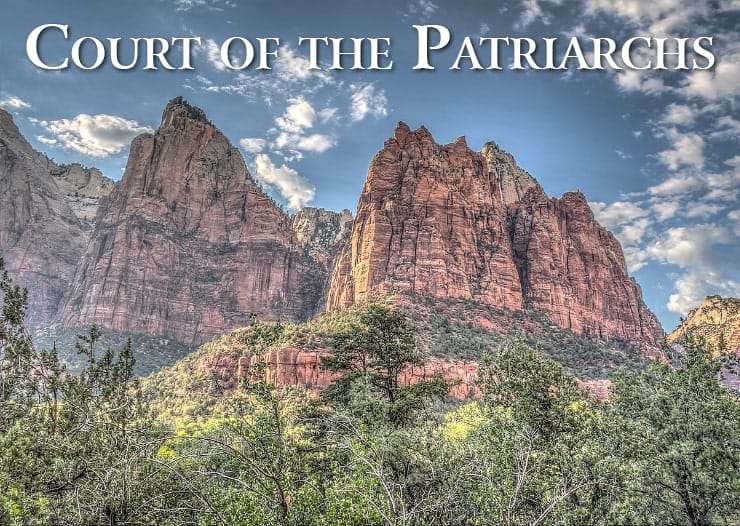
One of the first things you notice when driving to the Lodge is three monoliths to your west. These are called the Court of the Patriarchs specifically Abraham, Isaac and Jacob. There is a short trail that is as good a place as any to start your visit to Zion. Obviously, the Patriarchs themselves are a great picture opportunity.

- The cliffs were named by a Methodist minister, Frederick Fisher. This is ironic given that it was migrating Mormons that settled Zion and greatly contributed to making it accessible to others.
- Try and get to this spot in the morning when the sunrise is hitting the cliff side and lighting it up in all of its orange splendor.
- The face of the sandstone cliffs rise to a height of almost 2,000’ (610 m).
- There are actually two other formations that are visible from here as well, The Sentinel and Mount Moroni.
- The Court of the Patriarchs is the 4th stop on the Zion Canyon Shuttle.
On the Reel
The Big Trail (1930)
Starring John Wayne, Marguerite Churchill and El Brendel. Directed by Raoul Walsh.
The Duke’s first big movie role was also the first feature film ever shot in widescreen. Ironically it would be some time before either again rose to prominence. Director Walsh made great use of the wider frame to showcase the country as wagon trains made their way west from the Mississippi. Among the amazing vistas are shots from Zion National Park.
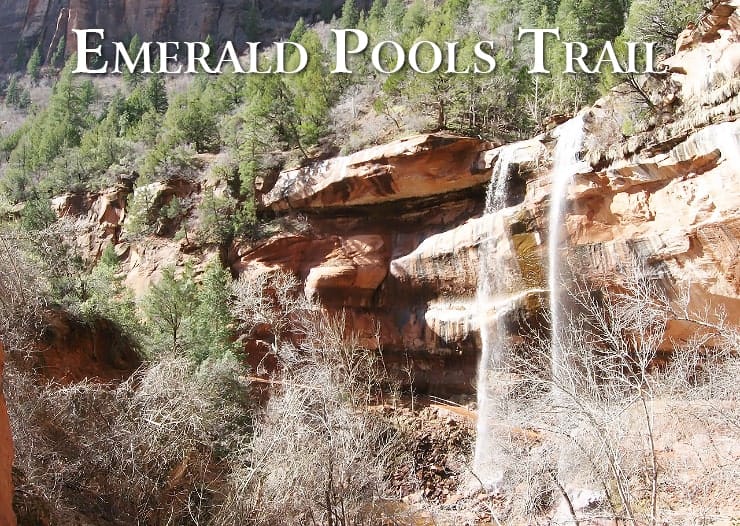
This is probably the most popular basic trail in the park. It is easily accessible from the lodge and has alternative routes that are convenient depending on your hiking prowess. We went all the way to the top and loved every minute of the hike. But be warned, if there in the summer, the middle and upper walks provide no shade and can get very hot. Stay hydrated and watch your step.

- Each alternative hiking trail leads to either pools, waterfalls or both. The Lower pool is fed by a waterfall you walk underneath (always a cool experience).
- If the heat is an issue just stay on the Lower trail where its paved path is shaded by cottonwood and box elder trees as it works its way along the North Fork of the Virgin River.
- The Lower trail was listed on the National Register of Historic Places on February 14, 1987.
- As with almost all trails in Zion half the fun is the views along the way but, if there in the summer, consider going early in the morning before it gets crowded.
- The Zion Shuttle stop can be either the Lodge (#5) or The Grotto (#6).
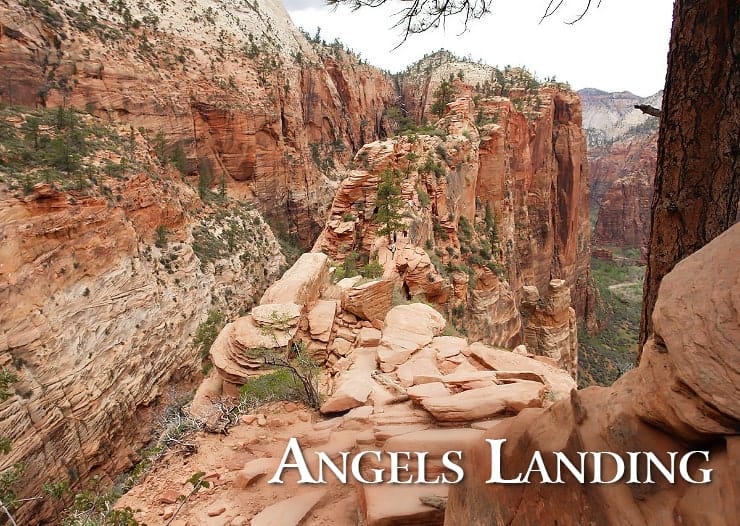
Angels Landing is the most famous part of the park. Known around the globe as one of the most dangerous trails it also has a view beyond words, making the trip all the more rewarding. If you have a fear of heights, but still love panoramic vista views, consider opting for either Observation Point or Canyon Overlook.

- Angels Landing got its name in 1916 when Fisher exclaimed, “Angels Landing is so high that only an angel could land on it.” That is certainly appropriate as the peak is 5,785’ (1,763 m) above sea level while the trail measures 4.4 miles (7.1 m) round trip.
- The trail contains an amazing 21 switchbacks which were designed in 1924 and called Walter’s Wiggles.
- If you do go all the way up you’ll experience an elevation gain around 1,604 feet (489 meters). Be cautioned . . . if you have a fear of heights the section above the Wiggles will be scary. While there are chains you can grab for support, some sections are only a few feet wide and . . .
- Some sheer drop-offs can be anywhere from 800-1,000 feet straight down so don’t worry if it proves too much (you aren’t alone). You can opt to stop at the Scout’s Lookout (just after the Wiggles) and still get a great view of the Summit.
- If you go first thing in the morning there is a natural cool-down section between the West Rim Trail and the Wiggles known as Refrigerator Canyon where you’ll be in the shade for a spell. Appreciate it, it’ll be the last.
- The trailhead is The Grotto, stop #6 on the Zion Shuttle.
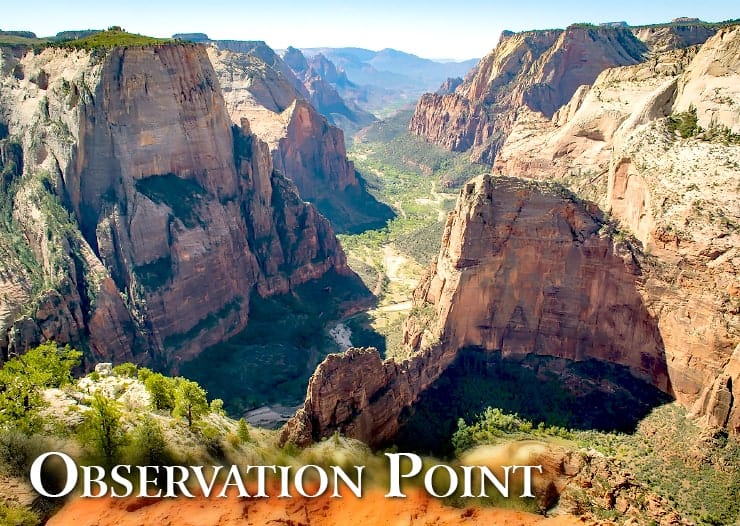
As incredible a view as Angels Landing provides it pales in comparison to that from the appropriately named Observation Point. Unfortunately to get there is almost a full day’s effort. Is it worth it . . . that really depends on how long your stay is. If you’re there for more than 3 days it is worth the effort otherwise consider Canyon Overlook.
- By the numbers: Elevation gain: 2,300’ (701 M), total distance 8 miles (12.9 KM), walking time is approximately 4-6 hours.
- The good news is the trail gets better as you go. Since it can get tiring in spots this should be the motivation you need to keep going. Not only are the views breathtaking but the climb also levels off a bit toward the end.
- One of the highlights is Echo Canyon. Similar to the aforementioned Refrigerator Canyon, here you can cool down a bit and enjoy some absolutely spectacular rock formations, canyon walls and great views.
- The payoff is worth the effort. At the summit, it feels like you can see forever. You realize just how high you are when you notice you are actually looking down at Angels Landing! The entire valley is sprawled out beneath you as the Virgin River winds its way into the horizon.
- The trailhead is Weeping Rock, stop #7 on the Zion Shuttle.
On the Reel
The Electric Horseman (1979)
Starring Robert Redford, Jane Fonda and Valerie Perrine. Directed by Sydney Pollack.
An aging rodeo, relegated to living off his reputation by promoting cereal in Las Vegas, finally snaps, takes off (mid-show) with the company’s horse and steals away into the desert. Hot on his heels is a dogged reporter. What follows is a surprisingly sweet romance between opposites and fulfilling redemption. Beautiful scenery of Zion National Park as well as some of Redford’s own property.
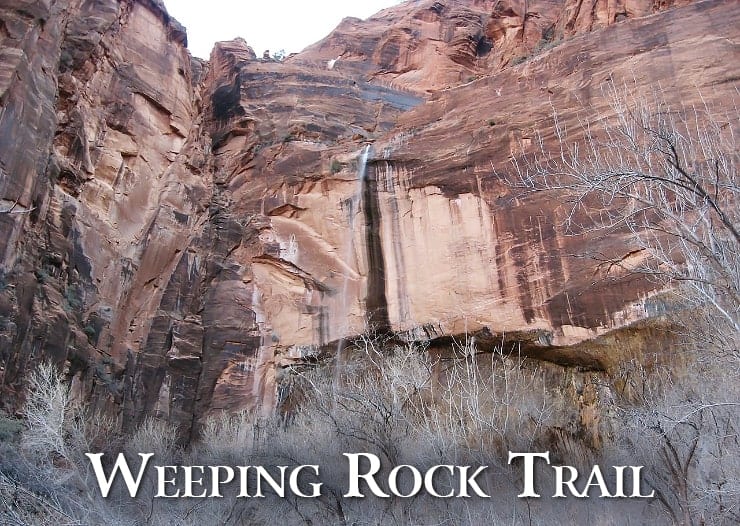
In contrast to many of Zion’s other areas, Weeping Rock is, despite some steep areas, an easy, short and cooling experience. You will probably get wet which, in the heat of summer, can be very refreshing. As a bonus, in the wintertime, the normal trickle of water becomes a veritable cascade flow. A beautiful sight indeed.

- There are actually a number of “weeping walls” to be found around the Park but this is the most accessible and popular.
- Millions of years have produced a bowl-shaped alcove with the lower layer of sandstone having eroded over time. Couple this with water forcing its way downward and actually forcing openings in the rocks known as “weeping”. The culmination is a unique, and visually stunning, rock formation.
- Please stay on the trail as some of the surrounding desert is sensitive and vulnerable to damage if trampled upon.
- The trailhead, as you may surmise, is Weeping Rock, stop #7 on the Zion Shuttle.
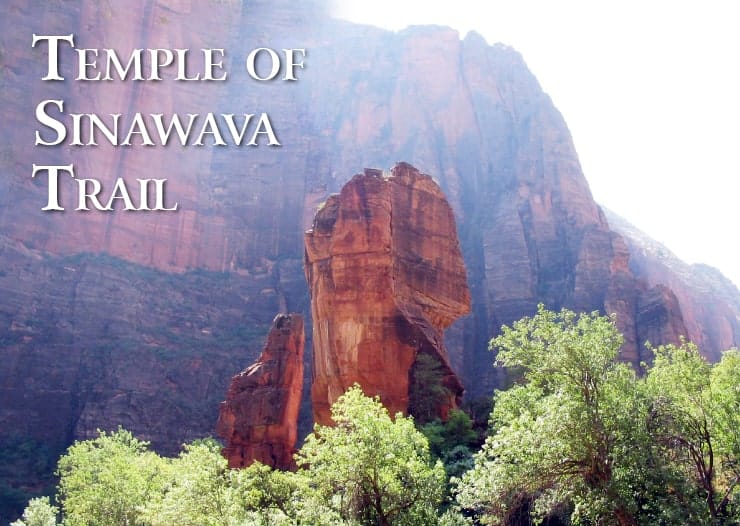
The Temple of Sinawava is best described as a natural amphitheater where two rock faces meet at an almost 90° angle. It’s shear walls hurtling up some 3,000’ (914 m) of rust red and chocolate brown surrounded by (in the spring and summer anyway) fields of wildflowers.
- This rock face was named in honor of the Paiute’s Coyote god or spirit (known for his mischievousness) by Douglas White, a publicity agent for the Union Pacific Railroad.
- For the Paiute’s, this area held special significance and was used for social and religious gatherings.
- Starting at the Temple the canyon begins narrow. Interestingly, the Zion Canyon is the opposite of Arizona’s Grand Canyon. Instead of viewing it looking down, in Zion you look up!
- The Zion Shuttle is Riverside Walk, #9, the last one on the line.
On the Reel
Romancing the Stone (1984)
Starring Michael Douglas, Kathleen Turner and Danny DeVito. Directed by Robert Zemeckis.
This groundbreaking fun flic combined action, drama and humor in a way not seen before (but much imitated since). A romance novelist must travel to Colombia to save her sister and enlists the aid of an American mercenary along the way. There is nary a mishap they don’t encounter while thwarting criminals, a corrupt local cop and the hopelessly inept wannabe bad guy Ralph (DeVito). Though the story takes place in Manhattan and Colombia most of the shooting was done in Mexico as well as at Zion National Park.
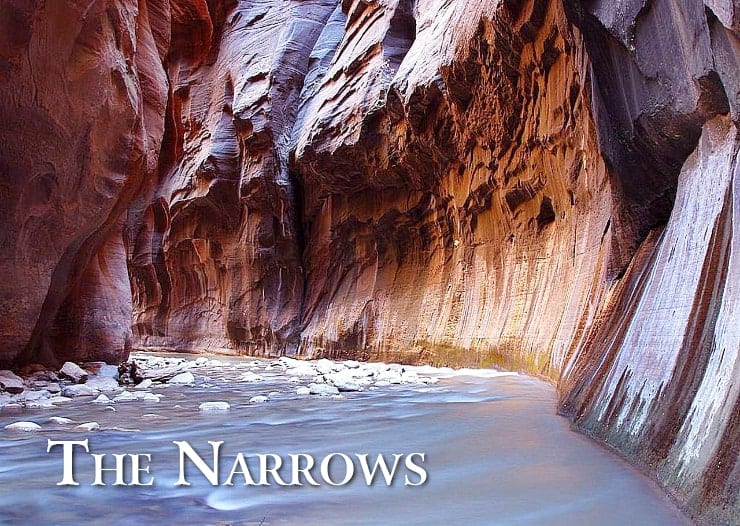
While the Narrows are a canyoneering paradise there are plenty of opportunities for hikers as well. Even if you only venture a bit you will likely see rock formations, unlike anything you have ever experienced in person. The entire aura the deeper you go is a unique sensation difficult to describe. It is so distinctive, very much what it would feel like to be on a different planet.
- There are (3) ways to hike the Narrows. Bottom Up: for the casual hiker. Top Down: a full day for serious hikers only (currently not available for legal reasons), Top Down: overnight via permit only.
- There are (5) levels ranging from basic hiking and river hiking/backpacking to relatively high-level canyoneering. The former can be done on your own but any canyoneering should be done with a professional that knows that section very well.
- If you can try at least to make it as far as the Orderville Gulch, an amazing side canyon in about 2½ miles (4 km).
- The Narrows are approximately 16 total miles (16 km) in length.
- The Narrows is so named, not surprisingly, because it is the narrowest point in the entire canyon.
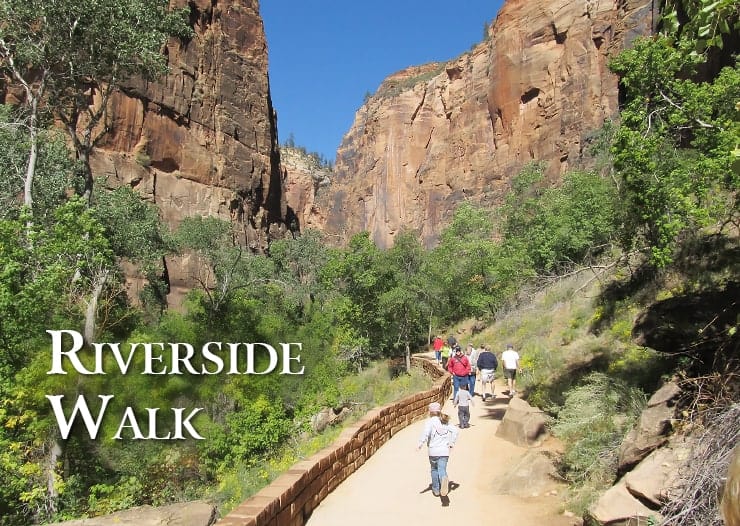
They say if you only walk one trail in Zion make it this one. Riverside is the trail that leads to the world famous Narrows (more on that in a moment) but it also has merit all on its own. The walking path parallels the Virgin River so there is far more growth than is the case in the drier areas of the Park. It is also very family friendly with pretty level terrain, wonderful hanging gardens, weeping walls and trees.

- Riverside Walk, a leisurely 1.9 mile (3.06 km) round trip, is also referred to as the “Gateway to the Narrows” for obvious reasons.
- This trail is also one of the better places in the Park to see wildlife like wild turkeys, blue heron, mule deer (best seen at dusk) or a bevy of squirrels. Please note: under no circumstances should you feed any of the wildlife in the park. It is for their benefit as well as your own. This includes the occasional tarantula.
- We would recommend water-proof hiking shoes, especially for this walk. Obviously, if you are continuing on to the Narrows it’s a must but also for those areas where you have access to the river.
- The Zion Shuttle is Riverside Walk, #9, the last one on the line.
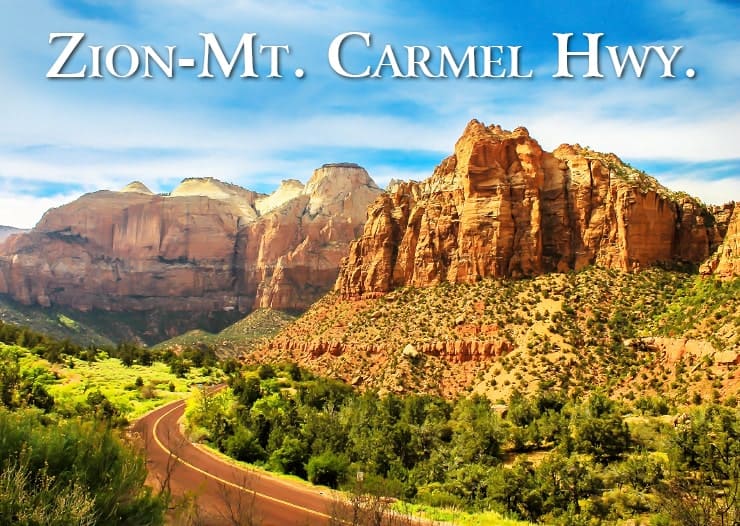
This 10-mile stretch inside the Park showcases all that is incredible about Zion. We spent a day at Bryce Canyon so we took this route in and out of the Park and were mesmerized. What’s truly remarkable is that each leg feels entirely different since your perspective is switched around. There are some (though not enough) areas to pull over though often they are already filled with cars. We were even lucky enough to spot a family of goats lounging in a small valley just off the road.
- There are (2) tunnels that were cut out of the mountains to provide a pathway through Zion from Springdale to Mt. Carmel. Both tunnels were built in the 1920’s, long before SUV’s, RV’s and motorhomes were conceived. Bottom line, drive slowly and carefully. The main tunnel is 1.1 miles long, but it feels longer!
- Large vehicles and RVs must pay an escort fee to travel through the tunnel as only one large vehicle can go through at a time.
- The only light in the tunnels is provided by “windows” where they cut all the way to the face of the cliffs outside.
- There is a fee to drive through the park.
- The highway was originally built as a connecting point between Zion and Grand Canyon National Park.
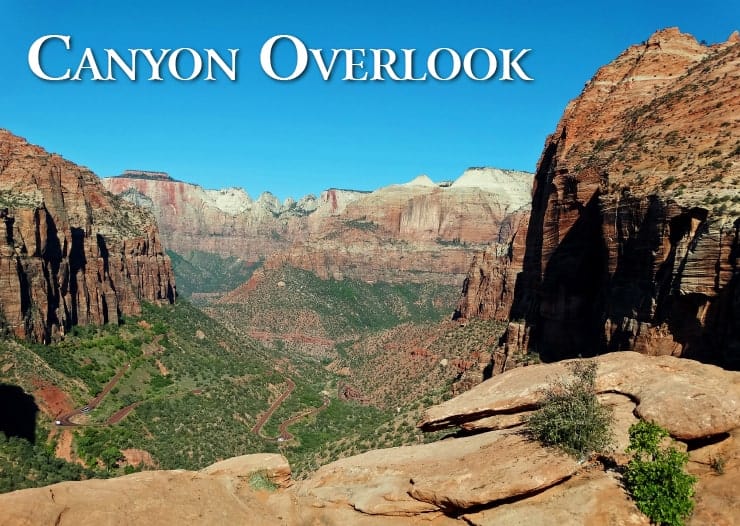
Are you looking for an amazing view but not the long hike . . . Canyon Overlook is the ticket. It’s an easy 1-mile round-trip that only has an elevation of 187’ (57 m). The reward is a beautiful view down into the valley that includes Zion-Mt. Carmel Highway (Hwy 9) switchbacks. The view on the other side is pretty spectacular as well.

- The catch for this view is you need to drive a bit. Going towards Mt. Carmel on Hwy 9 you’ll go through a long tunnel and park just on the other side (if there is room). Best to go early in the morning or later in the afternoon where you’re more likely to find an open spot.
- A short walk from your parking spot (a little elevation but pretty easy) will include some views of the Pine Creek Narrows, a semi-concealed cave plus some huge rocks and tree roots (a personal favorite).
- Once on top, if you look closely, you can just make out the “windows” carved out from the cliff side for the tunnel.
- Take your time and really soak in all of the different colors, rock formations, striations and plant life in the surrounding area.
On the Reel
Western Union (1941)
Starring Robert Young, Randolph Scott and Dean Jagger. Directed by Fritz Lang.
This classic western stars the iconic Randolph Scott in a tale of the western expansion of the telegraph. It involves the usual assortment of good brother/bad brother, a beautiful love interest, Indian attacks and beautiful western outdoors in spectacular technicolor. Cinematographer Edward Cronjager makes great use of the Arizona and Utah locations including Zion National Park.
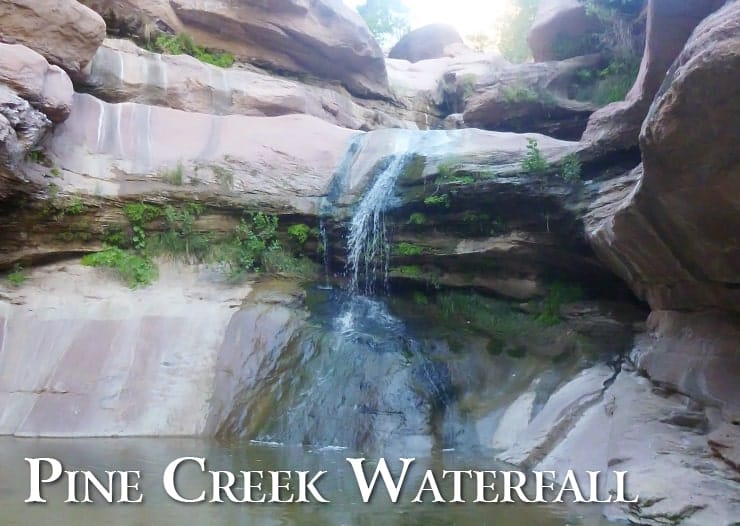
One of the great things about any national park are the little hidden gems to be found, with a little bit of effort, and sense of adventure. At Zion, one such place is Lower Pine Creek and surrounding waterholes. It is located just past the Canyon Junction on Hwy 9 when heading east or just a quarter-mile from the Canyon Junction shuttle stop.

- It’s more fun to walk to the falls. You will encounter some water and some large boulders to navigate up, over or around but nothing too challenging. Please do stay on the path so as not to damage the surrounding plant life.
- The falls themselves tend to have pretty steady flow with (2) drops, the second producing a cascade flow.
- Take a moment to look at all of the colors that have evolved over time on the rocks.
- Consider this an alternative to the more crowded Virgin River if you are looking for a nice cool-down on a hot day.
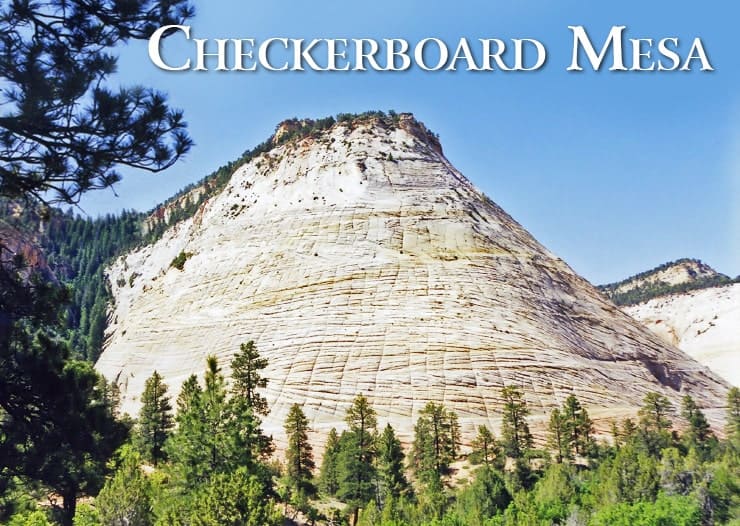
This mesa is the highlight of the Zion-Mt. Carmel Highway drive with its own pull off area. Thousands of years of natural erosion have created crisscross patterns all along the 900’ (274 m) cone-shaped sandstone hill. You can observe it from the road, walk up to the base or make your way up for some great views.
- A fun 2-4 hour hike will take you to the saddle (aka highpoint) of the mesa. It’s considered a moderate hike with a few boulders to navigate including one particularly large one but there’s a walkaround if needed.
- On the way keep an eye out for a neighboring formation known as “Crazy Quilt Mesa” which features vertical sandstone fissures more reminiscent of Bryce Canyon.
- From the saddle, you’ll have great views in all directions with the Parunuweap Canyon to your south and the White Cliffs to the north.
- The mesa’s distinctive horizontal and vertical lines are from winds blowing north to south while the vertical cracks are the result of thousands of years of alternating freezing and thawing weather conditions. The erosion will continue until the mountain simply is no more.
- The original name given to Checkerboard Mesa was Rock Candy Mountain.
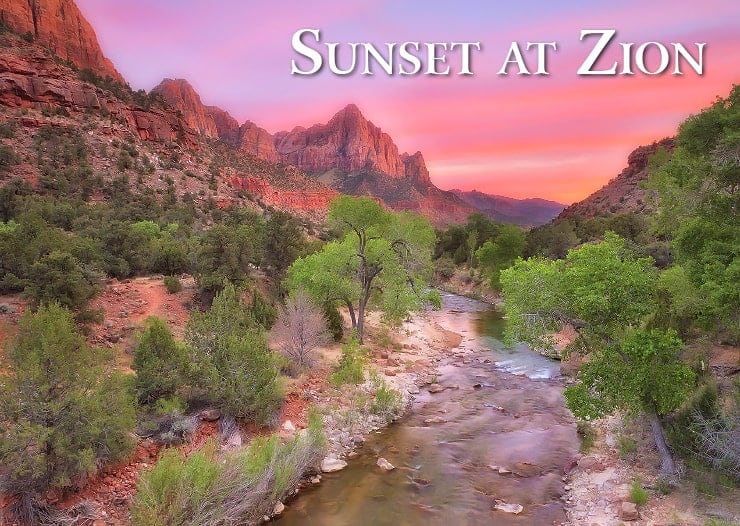
Plan at least one evening to stay at the park for the sunset. Even better, camp overnight and experience a night sky unlike any you’ve likely seen before. What makes both experiences unique is the fact that Zion goes completely dark so all you see are natural sources of light. If you live in the city or suburbs you really want to see this in person. It’s wonderfully overwhelming. Just be completely mindful that it gets pitch black so bring a few powerful flashlights and extra batteries.
- If you’re all out of energy after a day of hiking, the Zion Human History Museum provides a pretty good viewing spot of the sunset. For that matter, the sunrise isn’t too shabby either.
- The best way to experience the sunset is along the Pa’rus Trail accessible just outside of the Museum. While you won’t actually see the sun setting in the sky the reflection off the mountains are guaranteed to dazzle. On the trail, the best vantage is looking at the Watchman which comes alive with variations of orange and deep red.
- Another option is on the west side of the park at the Kolob Canyons. If time allows . . . do both!
- After dark provides another amazing opportunity to sojourn with nature. The sky fills completely with thousands of stars and wonderful views of the Milky Way. If you position yourself correctly you can see the distinctive outlines of the mountain tops and edges against the lit up sky.
On the Reel
Jeremiah Johnson (1972)
Starring Robert Redford, Will Geer and Delle Bolton. Directed by Sydney Pollack.
Redford and Pollack team up again for this classic about a mountain man and his struggles, and triumphs, trying to survive and co-exist with the wilderness, the cold, wildlife and the Crow. A simple story that allows nature to take a front seat in the story-telling. Much of the film is shot on Redford’s 600-acre property in Utah as well as Zion National Park.
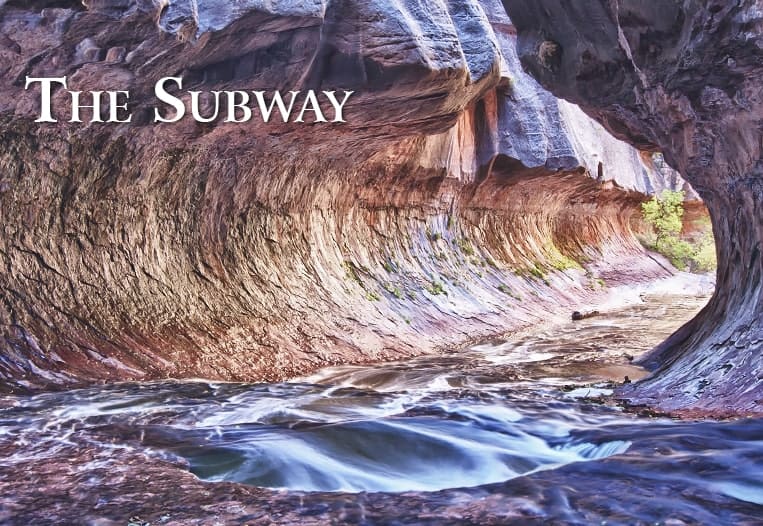
The Subway is, literally, not for everyone. You need to acquire a permit to truly explore but, if qualified, it produces some of the more stunning moments in the Park. Unless you are an experienced route planner and canyoneer you really need a guide to lead you on many of the routes. We would recommend a guide regardless as knowledge of the routes can be vital to surviving.
- There are (2) approaches to the Subway, from the bottom up or the top down. I should note that there is an option to just walk along the base which is a great experience as well but further exploration does provide greater thrills.
- Bottom Up: this route is a loop that starts and ends at the Left Fork Trailhead on Kolob Terrace Road. Be prepared for working your way over and/or around boulders, crossing creeks with very cold water and calling on your route finding skills. You don’t want to get lost at any point on the 9-mile trek.
- Top Down: Entering at the Wildcat Canyon Trailhead off of Kolob Terrace Road, the top down route requires more canyoneering skills. You’ll undertake rappelling (60’ (18 m) of rope recommended) and cold water swimming. The trek is 9½ miles and comes out at the Left Fork Trailhead.
- Be aware that sections can be near pitch black so a headlamp is needed. Depending on the time of year the top down approach could require a wetsuit.
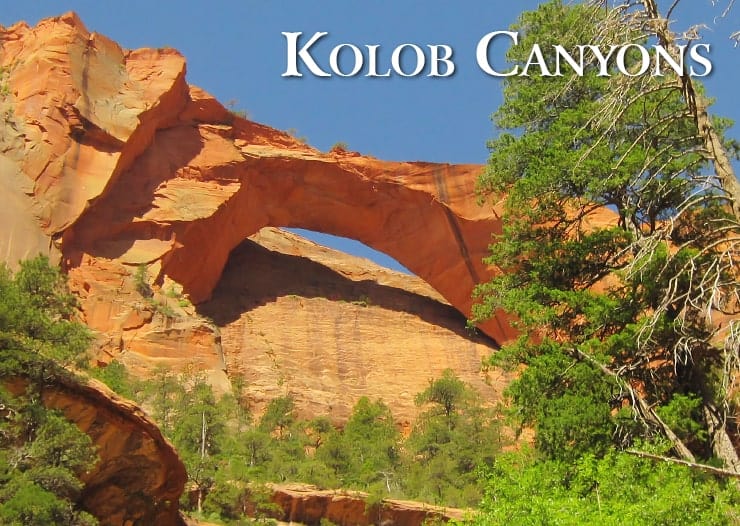
The Kolob section of the park (on the west side) is actually in two parts. Our favorite is the canyon side. While there are hiking trails (see Taylor Creek below) it’s really the drive that is the star. It’s a 10-mile round trip filled with tons of pull-over and gaze sections. And, unlike Zion-Mt. Carmel Highway, this section is less well-known and that means less crowded!
- To get to Kolob you actually need to leave Zion National Park and drive back to I-15. Figure about a 45-60 minute detour but it’s worth every moment.
- Horse Ranch Mountain is the highest peak in the entire Zion National Park topping out at 8,726’ (2,660 m).
- Kolob Arch is the second longest natural arch in the world. It has been measured at a span of 287.4 ± 2 feet.
- As mentioned previously, Kolob Canyons is an excellent place to view the sunset. It absolutely lights up the mountains in a wash of oranges and reds.
- The name Kolob, meaning a heavenly place close to God, was inspired by “The Book of Mormon.”
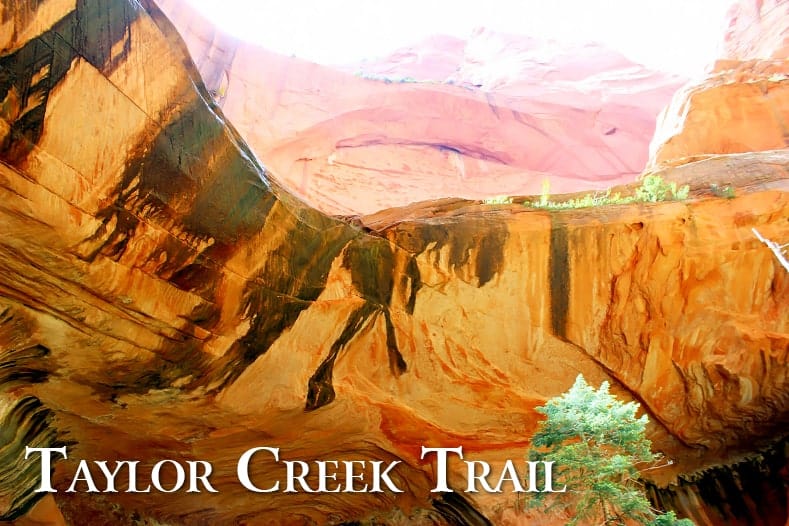
The best trail on the Kolob side is the Taylor Creek Trail (aka Middle Fork of Taylor Creek). Like all of Kolob, it is less crowded but no less amazing. Trees provide some needed shade along the way but the real reward is the alcoves at the end of the 5.6 mile (9 km) journey.

- This is a fantastic trail for the entire family. The trail is always clear and clean. It also crosses over the creek in multiple sections which provides natural breaks and resting points. Really you could almost just follow the creek itself most of the way.
- While you will definitely become familiar with toads and lizards be aware that rattlesnakes are about as well. It’s been our experience that if you leave nature alone it will reciprocate in kind.
- You’ll encounter (2) old homesteads, Larson Cabin and Fife Cabin, along the way that can serve as trail markers and natural rest stops. They were built in the 1930’s before Kolob was part of Zion.
- The Double Arch Alcove at the end of the trail is an explosion of colors including orange, burgundy, white, yellow and green, caused by natural erosion in the sandstone.
On the Reel
Winchester ’73 (1950)
Starring James Stewart, Shelley Winters and Dan Duryea. Directed by Anthony Mann.
This excellent western classic was one of Jimmy Stewart’s personal favorites and it’s easy to see why. Aside from the poor casting of a young Shelley Winters in the heroine role, the rest of the film is nearly flawless and holds up very well even today. Featuring early roles from Rock Hudson (as an Indian chief) and Tony Curtis (billed as Anthony) and beautiful Western vistas including Zion National Park.
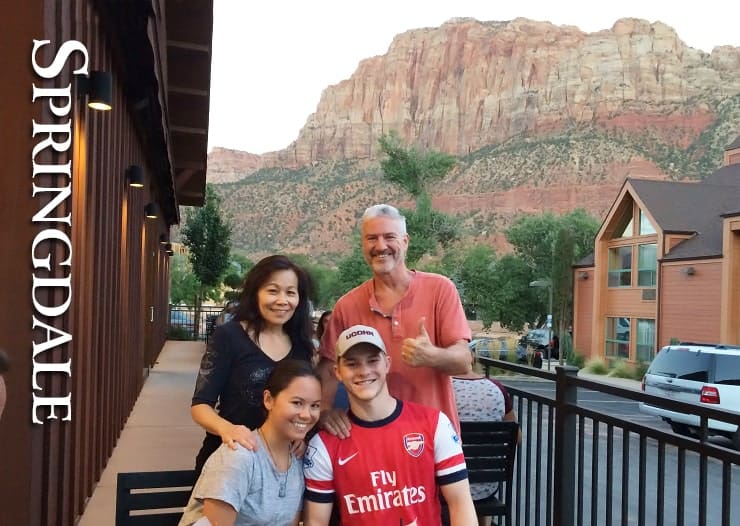
When planning on spending a few days exploring Zion National Park many opt to stay in Springdale. They have multiple lodging options and very convenient shuttle service to-and-from the Park running all day. It also has a bustling downtown strip filled with all kinds of interesting shops, art galleries and studios, restaurants and even an IMAX as a nice break from the constant exploring.
- One of the more interesting stops is the Worthington Gallery, with their wind chimes and metalwork art, located on the east end of the main drag (Hwy 9).
- A favorite of ours for a light breakfast was the Deep Creek Coffee Company. Always busy but a great atmosphere, friendly service and great views off of the upstairs deck. MeMe’s is also a great choice for breakfast.
- Our best dinner was at the Jack’s Sports Grill (aka Switchback Grille) where we sat out front with amazing mountain views (see picture above).
- Behind our hotel was the Virgin River which, if the water is high enough, provides fantastic tubing opportunities. It is BYOT (tube).
Final Thoughts
As always, this article is just the tip of the iceberg, so to speak, concerning Zion National Park and how absolutely overwhelming it is. If you live in a different part of the world or even the US, the landscape in Utah is so utterly unique and completely compelling. Not sure we could live there but the visit was a once-in-a-lifetime experience.

We would love to hear from you about your experiences, not only at Zion, but any of the amazing National Parks in this part of the country. Have a great day!






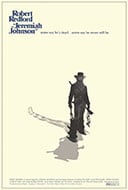

I appreciate your creativity in this blog! The pictures are stunning. I like how you incorporated pictures, details of each area, travel tips, and the explanations of movies and plot lines into the blog. I briefly lived in Utah near this Zion National park, but never ventured there. I would enjoy seeing Zion and taking an adventure to experience this destination! Thanks for sharing your adventure!
Wonderful tips and pics! It definitely helps to have some great info on a new area before exploring. This is something I can refer to when we visit. Thank You!
Happy to hear you enjoyed the article. It is a truly beautiful part of the country.
Angels Landing sounds so amazing (as do all the other locations in your list), but the drop offs sound so scary. I would be afraid to take my kids to that one. Looks like there is plenty for us to do otherwise.
If you, or anyone with you, has any issues with heights . . . probably best to avoid Angels Landing. There are other places in the park to enjoy great views without your hair standing on end! Lol
Beautiful! Will definitely be going on my bucket list.
Great to hear. Appreciate the feedback.
I really love all the great pictures on this post and the fun facts are such a great idea!